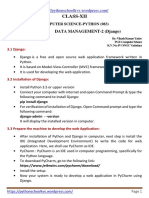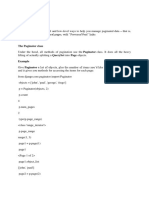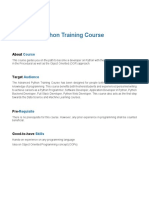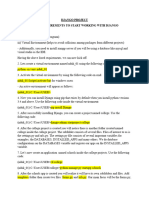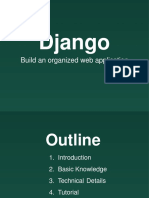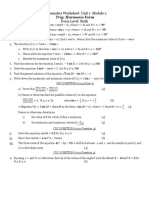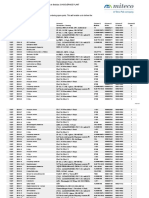0% found this document useful (0 votes)
14 views11 pagesDjango Step by Step Procedure
This document provides a step-by-step guide for setting up a Django project that handles CSV files, including creating a virtual environment, installing Django, and defining views for handling form data and CSV interactions. It also outlines how to set up a default SQLite database and switch to a MySQL database, detailing the necessary changes in the settings and models. Key functionalities include rendering HTML templates, processing form submissions, and reading/writing data to CSV or database tables.
Uploaded by
Shanthi RamamoorthyCopyright
© © All Rights Reserved
We take content rights seriously. If you suspect this is your content, claim it here.
Available Formats
Download as PDF, TXT or read online on Scribd
0% found this document useful (0 votes)
14 views11 pagesDjango Step by Step Procedure
This document provides a step-by-step guide for setting up a Django project that handles CSV files, including creating a virtual environment, installing Django, and defining views for handling form data and CSV interactions. It also outlines how to set up a default SQLite database and switch to a MySQL database, detailing the necessary changes in the settings and models. Key functionalities include rendering HTML templates, processing form submissions, and reading/writing data to CSV or database tables.
Uploaded by
Shanthi RamamoorthyCopyright
© © All Rights Reserved
We take content rights seriously. If you suspect this is your content, claim it here.
Available Formats
Download as PDF, TXT or read online on Scribd
/ 11















